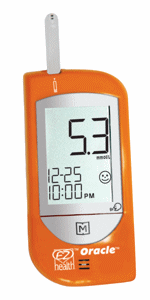Today is November 14. It's World Diabetes Day and it's also Sir Frederick Banting's birthday.

Diabetics around the world owe their lives to Sir Frederick (and of course, his co-discoverer, Charles Best) for their groundbreaking discovery of the use of insulin on humans with diabetes.
Here are 5 things you may not have known about Sir Frederick from
The Canadian Diabetes Association:
1. He was a decorated war hero
Sir Frederick served in both the First and Second World Wars. He was with the Canadian Army Medical Service in 1916 and on September 28, 1916, he attended to his battalion on the front for 17 hours, saving many lives. He suffered a interosseous artery in his right arm, but refused to be sent to the rear, earning him the Military Cross for 'distinguished and meritorious services in time of war".
(an interosseous artery is about 1 cm. in length, arises immediately below the tuberosity of the radius from the ulnar artery. Passing backward to the upper border of the interosseous membrane, it divides into two branches, the anterior interosseous and posterior interosseous arteries)
2. He was an acclaimed artist
Sir Frederick painted with the renowned Group of Seven painters - alongside the likes of A.Y. Jackson and Tom Thompson. He formed a bond with the Group when, in 1923, he won the Nobel Prize for Physiology or Medicine and wanted refuge from his newfound professional pressures. He is still among Canada's most noteworthy amateur artists.
3. His home draws thousands of tourists every year
This home was bought by the Canadian Diabetes Association in 1981 and is known as the Banting House Historic Site. It has become one of London, Ontario's most important national and international tourist site.
Frederick Banting started his medical practice in this house in 1920 though now, it is a full-fledged National Historic Site of Canada. It holds an array of historical artifacts, artwork, and a restored bedroom that captures the moment in time when Banting conceived the idea for insulin.
People from around the world leave notes of thanks for his contribution to the betterment of their lives. His room is now a veritable shrine to the man who has made diabetes management so much easier than it was in the 20s.
Even the Queen has written a "Dear Dr. Banting" letter that is in the museum.
4. He was a comic book hero
In December, 1941, the Comic Book Corporation of America published its second issue of World Famous Heroes magazine. This comic book was dedicated to telling true stories behind noteworthy figures in history. Banting appeared alongside American President Andrew Jackson, baseball star Lou Gherig, and military legend General "Billy" Mitchell.
He was billed as "Canada's Renowned Scientist". The story in the magazine tells his complete life story including his service in World War 1, his discovery of insulin and his death during World War 2, in 1941.
5. He died serving his country
As mentioned a few times above, Sir Frederick served in both the First and Second World Wars. By the time the Second World War broke out, he was already famous for his discovery of insulin, but his research wasn't yet finished.
In 1938, he had begun working for the National Research Council to fix a critical gap in Allied scientific knowledge. He focused on aviation medicine.
His research helped develop the G-Suit, which is an outfit worn by pilots that prevents blood from pooling in the lower regions of their body, preventing them from passing out.
In 1941, he set off for Britain to continue his research as part of the Allied war efforts. After he took off from Gander, Newfoundland, his plane failed and crashed. He initially survived the crash, but succumbed to his injuries on February 21, 1941.
His loss was a tragic one in a time when his research was really branching out. But we diabetics will always be grateful for his contribution to our continuing health. Thanks to Drs. Banting and Best, us diabetics enjoy much longer, healthier lives.
So, raise a glass (or a vial of insulin) and let's toast Sir Frederick Banting.
Happy Birthday, Dr. Banting.



